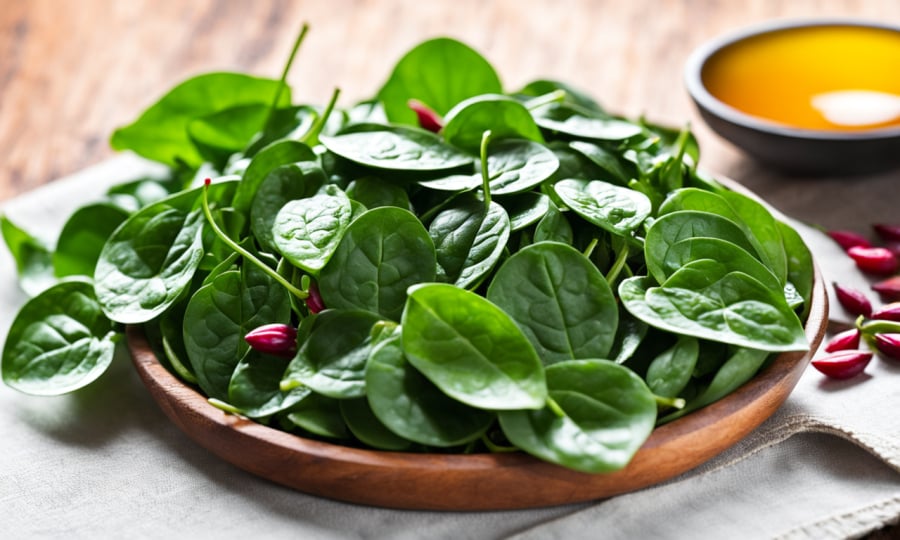Water spinach, known as “rau mồng tơi” in Vietnamese, is a familiar dish in Vietnamese family meals, especially during the summer. With its sweet and cool taste, packed with vitamins A, C, and iron, water spinach is a popular choice for a cooling soup.
However, is water spinach always beneficial? The answer is not entirely yes. While it is a healthy summer vegetable, improper preparation and consumption can lead to unexpected side effects.
Below are three common mistakes that many Vietnamese people make when it comes to eating water spinach.
1. 3 Things to Note When Eating Water Spinach
1.1 Avoid Using Aluminum or Cast Iron Pots for Cooking Water Spinach
One common mistake when cooking water spinach is using aluminum or cast iron pots. Water spinach tends to become sticky when cooked, containing compounds that easily react with metals like aluminum and iron.
- Harmful chemical reactions: Cooking water spinach in aluminum or cast iron pots can cause metal ions to dissolve into the food. The sticky texture of water spinach readily reacts with these ions, forming compounds that are not beneficial to the body. Over time, excess aluminum or iron intake can impact nerve function and liver and kidney health.
- Altered color and taste: The soup may change color, losing its natural green hue, and the taste may be affected, making the dish less appealing.
To retain the flavor and nutrients of water spinach soup, it is recommended to use stainless steel, heat-resistant glass, or enameled pots.

One of the things to note when eating water spinach is to avoid cooking it in an aluminum pot.
1.2 Avoid Eating Water Spinach with Calcium-Rich Foods
Another less-known fact is that water spinach and calcium may not go well together. Water spinach contains oxalates, which can combine with calcium to form calcium oxalate crystals.
- Risk of kidney stones: The combination of oxalates and excess calcium can lead to the formation of insoluble crystals, which is why some people question the benefits of water spinach. If consumed incorrectly, this vegetable can have adverse effects.
- Reduced iron absorption: Calcium also interferes with the absorption of iron from water spinach.
To consume water spinach correctly, it is advisable to avoid pairing it with calcium-rich foods.
1.3 Do Not Leave Cooked Water Spinach at Room Temperature for More than 2 Hours
Water spinach soup, once cooked, should be consumed promptly, especially during the summer. Its sticky texture and high water content make it prone to spoilage if left out in the open for too long.
- Loss of nutrients: Vitamins A and C in the vegetable are susceptible to oxidation when exposed to air, resulting in reduced nutritional value.
- Risk of food poisoning: Consuming spoiled water spinach can lead to nausea, diarrhea, and abdominal pain, especially in the elderly and children.
2. Who Should Avoid Eating Water Spinach?
- People with kidney stones: As mentioned earlier, water spinach can contribute to kidney stones when combined with high calcium levels. Individuals with a history of calcium oxalate stones should limit their intake or consult a doctor.
- People with gout or high uric acid levels: While the purine content in water spinach is not as high as in red meat, it can still stimulate uric acid production. Therefore, individuals with gout should consume it in moderation.

Individuals with gout are advised to refrain from consuming water spinach.
So, is water spinach good for you? The answer is a definite yes if consumed correctly. With its diverse nutritional profile and ability to cool the body, improve digestion, and promote healthy skin, water spinach is an excellent summer vegetable. However, keeping in mind the three things to note when eating water spinach will ensure you reap its benefits without any drawbacks.
“Two Delicious Ways to Cook Tough Water Spinach Stems: A Tasty Treat for the Family”
Introducing the versatile and often underrated water spinach, a staple in Asian cuisine. Most of the time, we discard the older, tougher stems, opting for the tender young shoots. But with these two simple preparation methods, you can transform those forgotten stems into a delicious and nutritious treat. Uncover the hidden potential of this humble vegetable and elevate your culinary creations.






































